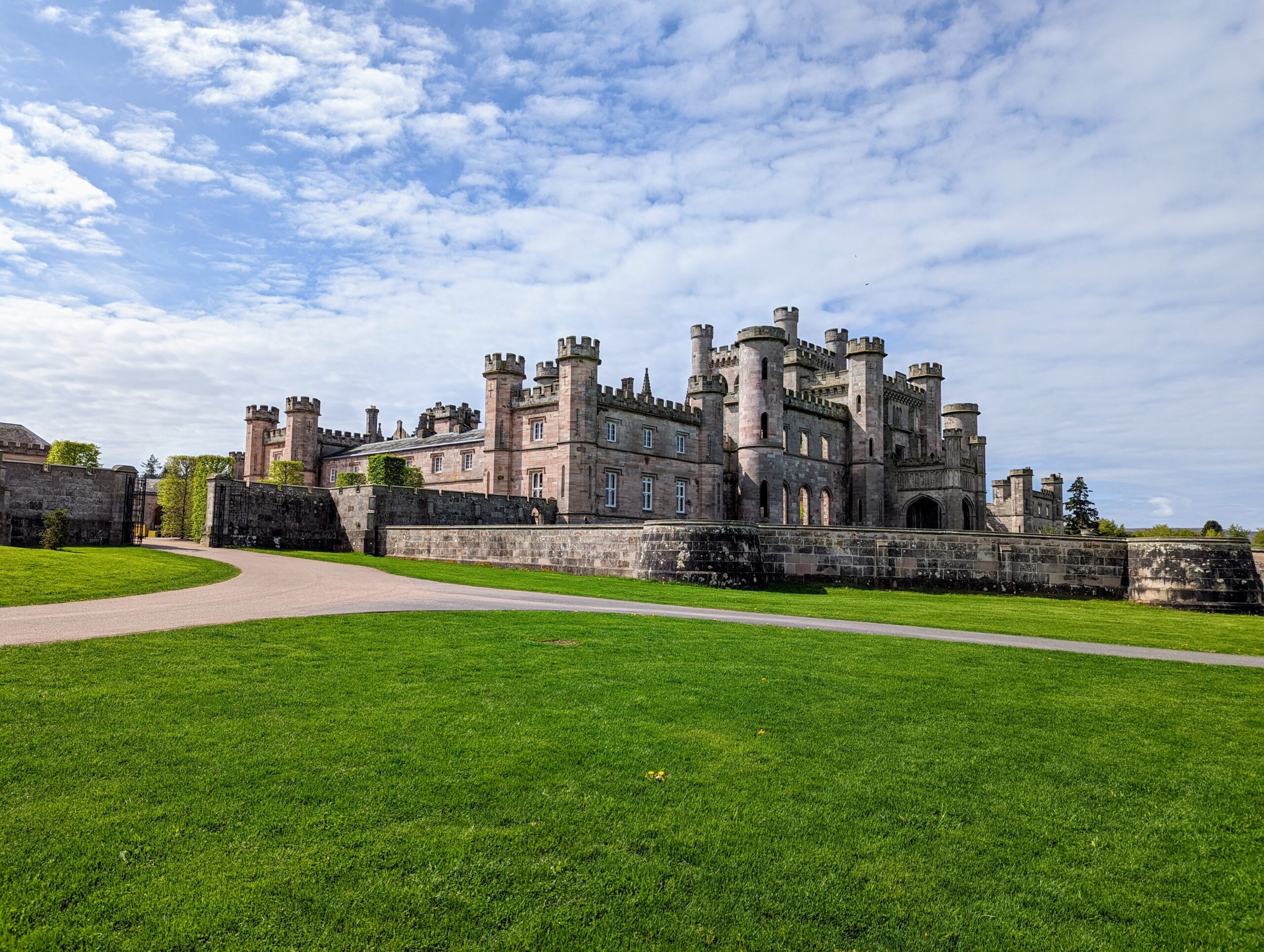Lowther castle is a glorious gothic castle masterpiece nestled away in the stunning Lake District’s scenery. The castle ruins we see today are not strictly a castle at all but a country house that was completed in around 1812, however the Lowther family has occupied the grounds since 1150.
| Built | 1812 |
| Type | Neo-Gothic House |
| Condition | Ruins – considerable stonework remains |
| Ownership | Lowther Trust |
| Access | Public – Fee |
Click here to watch our video tour of Lowther Castle
Before the Castle
The origins of the Lowther dynasty began in 1150 when Dolfin de Lowther founded a settlement at the site.
During the reign of Edward III in the 13th century, Sir Hugh de Lowther gained the right to “impark” at Lowther and built a deer park beside the River Lowther, Sir Hugh also built a motte and bailey fortification at the park. As the dwellings at the Lowther estate grew and threats from Scottish raiders increased the motte and bailey was replaced with a pele tower in the 14th century. Over the following centuries, the Lowther family’s status was firmly established and they acquired further lands including Whitehaven Castle and lands in Rutland.
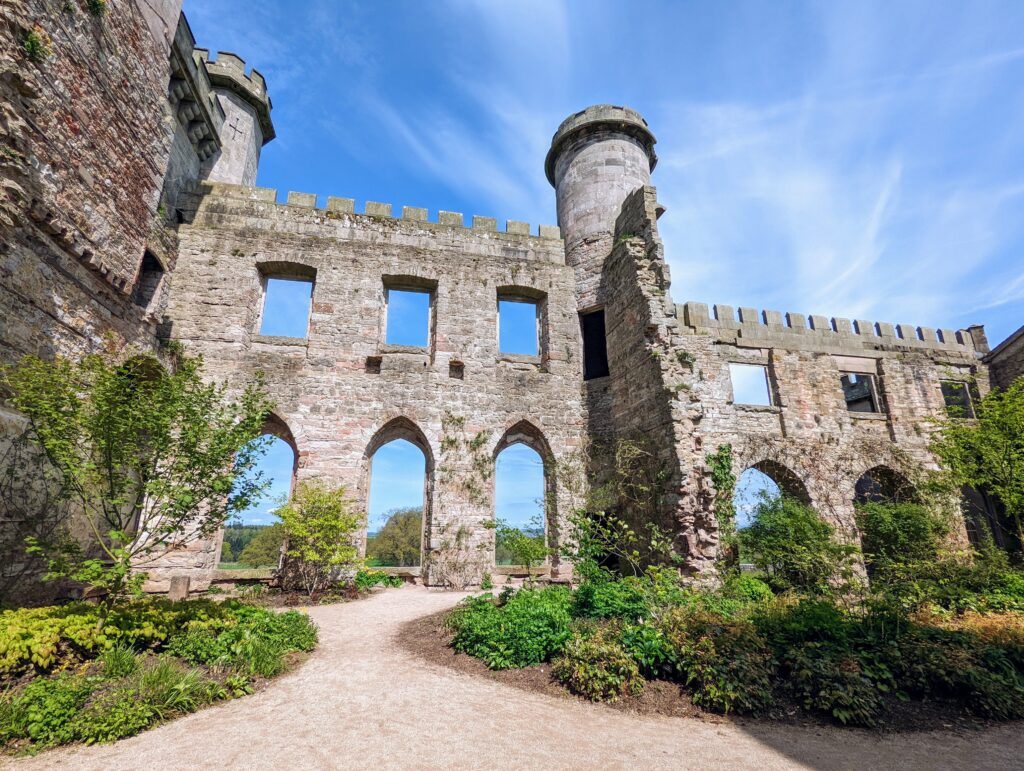
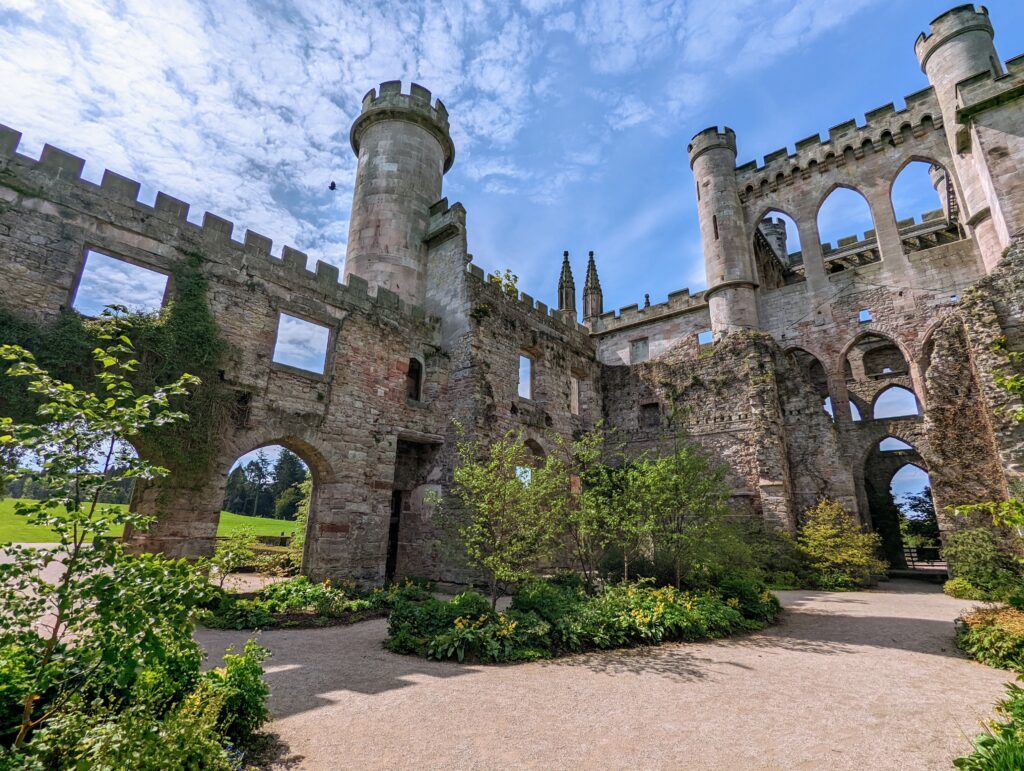
Rebuild and Catastrophe
In the late 17th century the pele tower was replaced with a luxurious Jacobean residence and the families fortunes were flourishing but things were about to take a turn for the worse in the early 18th century. In 1714 the young promising heir, Richard died at just 21 from smallpox and Lowther Hall passed to his younger brother, Henry. Disaster struck in 1718, a massive fire tore through the house leaving much of it in a ruinous state. When Henry passed in 1751 he left no heir and the family’s fortune was drained. The Lowther estates passed to Henry’s cousin, James Lowther, also referred to as “Wicked Jimmy”.
The coal pits at Whitehaven generated a fortune for James Lowther, he further consolidated his position of power through his marriage to Lady Mary Stuart, the daughter of Lord Bute and also a coal heiress. Despite his vast wealth James was known to be mean and have an explosive temper. James managed to gather a fortune and titles but little happiness, his marriage was unhappy and he had no heirs, his true love was his mistress, Betsy Lewes but she died young. James died in 1802 “of a mortification of the bowl” and the estates passed to a distant cousin, William Lowther. It is said though that Wicked Jimmy has never completely left Lowther and that his ghost haunts Lowther riding wildly on his galloping horse through the estate.

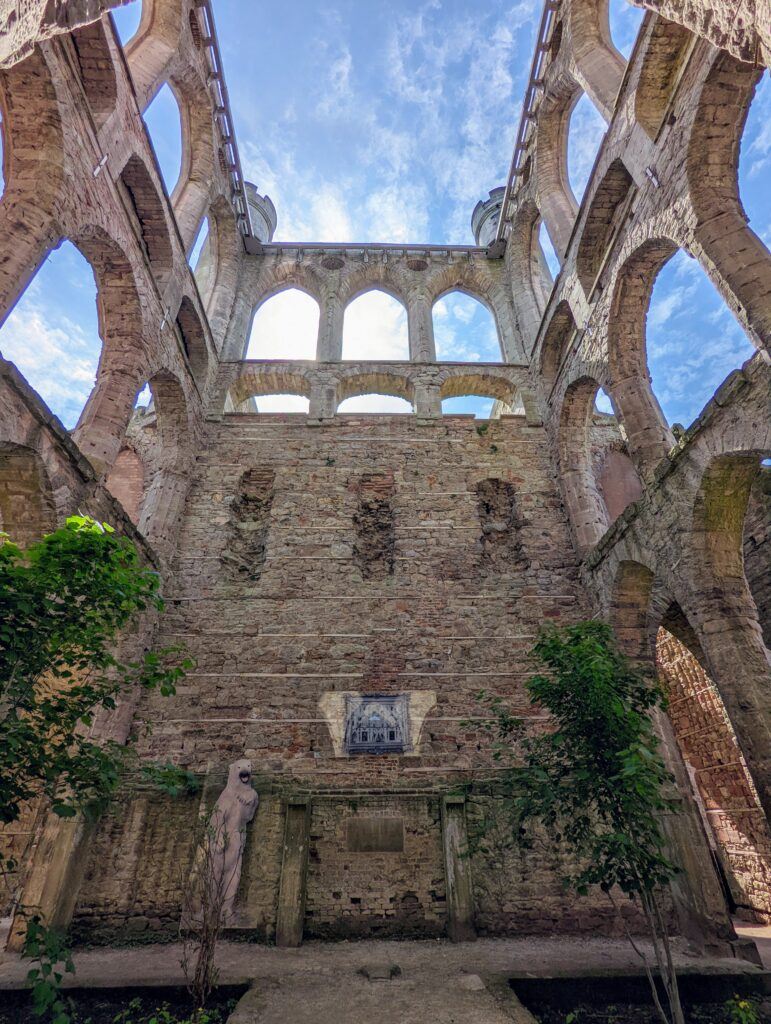

The Castle We See Today
William Lowther, 1st Earl of Lonsdale, commissioned a grand gothic castle in 1806 at Lowther. The castle was designed by the young architect Robert Smirke, who was later responsible for many grand civic buildings in London, including the British Museum. Lowther castle was completed in around 1812 and remarkably at half the estimated cost (original estimate was £150,000 approximately £8 million today. The completed castle was lavish with hundreds of rooms.
William and his wife Augusta were great patrons of the arts, they were good friends with William Wordsworth and encouraged artists to visit Lowther, the most famous being J.M.W. Turner who painted “Lowther Castle – Evening”.
The 2nd and 3rd Earl of Lonsdale continued to add to the castle’s grand art and ancient works collections. The 4th Earl of Lonsdale, St George Henry, inherited the castle when he was just 23 in 1878. St George went on to marry Lady Gladys Herbert, a famous socialite of the day. St George’s lordship of the castle was short lived as he died at the premature age of 26 in 1882.
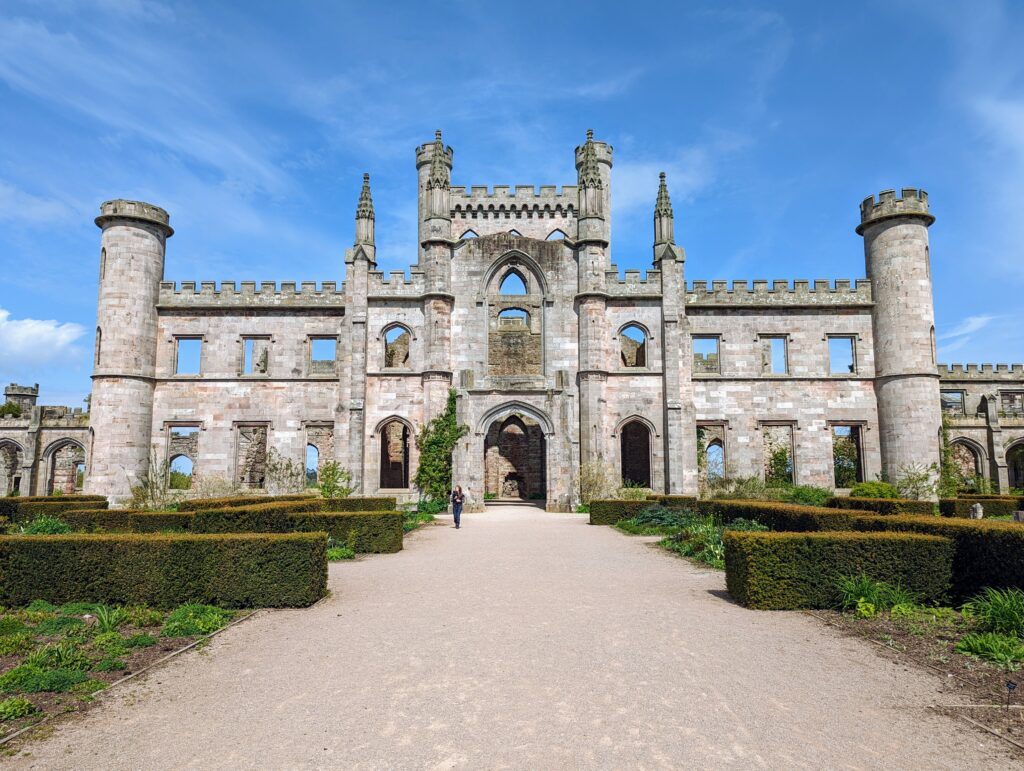
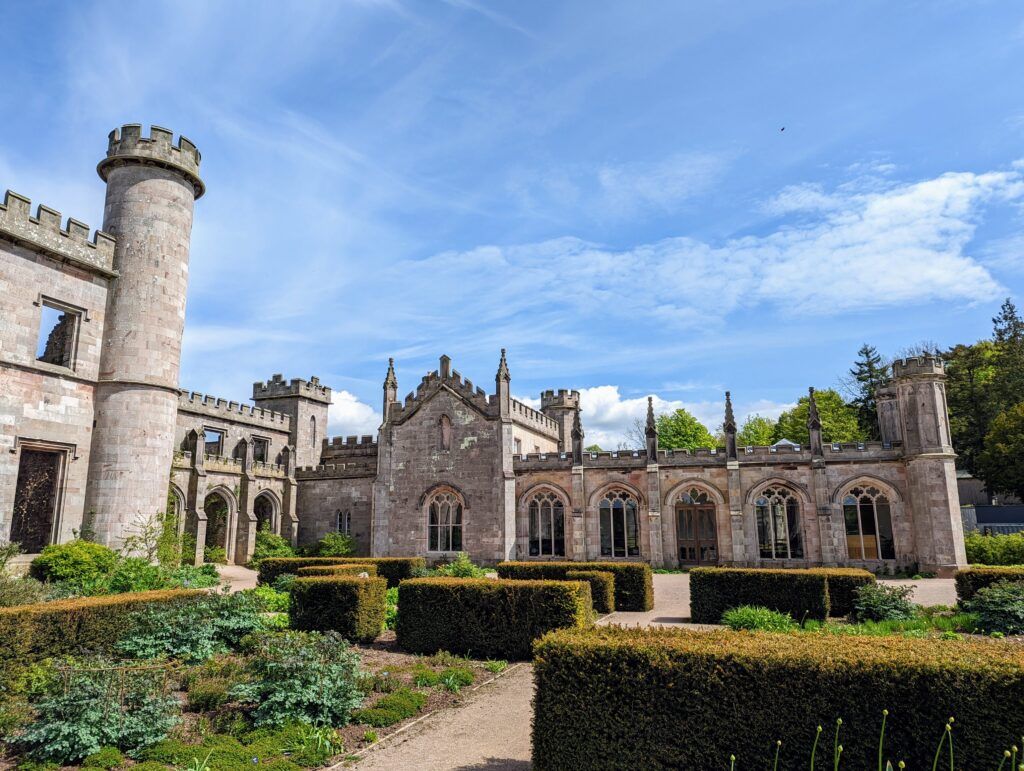
Fortune Wasted
Following St George’s unexpected death, the castle passed to his younger brother Hugh Cecil Lowther, 5th Earl of Lonsdale. Hugh had not had appropriate training or education that fitted the role of managing the castle and finances.
Prior to inheriting the castle, Hugh had married Lady Grace Gordon. Grace had become pregnant but following a fall whilst hunting she lost the baby and was thereafter unable to bear a child.
Hugh lived a lavish lifestyle, indulging in his hobbies and enjoyed the finest things in life. He spent vast fortunes on horses, private staff, his own orchestra, entertaining guests and even his dogs had their very own carriage. Despite having a younger brother, Hugh saw himself as the last in the Lowther line dynasty.
Hugh is also known as the “Yellow Earl”, due to his fondness of the colour yellow. Hugh had yellow cars, carriages, his orchestra had yellow uniforms, his dogs were golden retrievers and at one point he even bred buff coloured turkeys. Hugh’s fondness of yellow resigned from the family coat of arms which features the colour Or (Or means gold).
Hugh’s spending was out of control and he was forced to sell some of his ancestral properties to cover costs, Whitehaven Castle and Barleythorpe Hall in Rutland. In 1935 the financial situation had become so dire that Hugh could no longer afford to live at Lowther Castle and moved to more modest accommodation.
Hugh died in 1944 but four years prior to this, Lowther Castle had been assigned for efforts in World War II. The castle was not returned to the Lowther family until 1954. Hugh’s brother, Lancelot Lowther had inherited the castle but was forced to auction the wonderful art collection and many other treasures to repay the debts that Hugh had left.
Lancelot died just four years after inheriting Lowther castle and it was passed down to his grandson James. James developed the estate into a farming project with the forecourt becoming pig pens, the gardens became a timber plantation and various other areas used for farming purposes. James also faced crippling death duties of £25 million and in order to try to fund the duties he removed the castle’s roof and a great deal of the stonework to sell.
New Opportunities
James passed away in 2006 and since his death significant restoration work on the grounds has commenced. The animal farming and tree plantation has been removed and the estate received a massive £9 million grant for improvements which led to the grounds being ready to open their doors to the public in 2011. Lowther castle is now a popular tourist attraction, the enormous castle shell can be explored and the glorious gardens have been brought back to life.
Lowther Castle postcode CA10 2HH
Click below to watch our video on the history and exploring Lowther Castle

